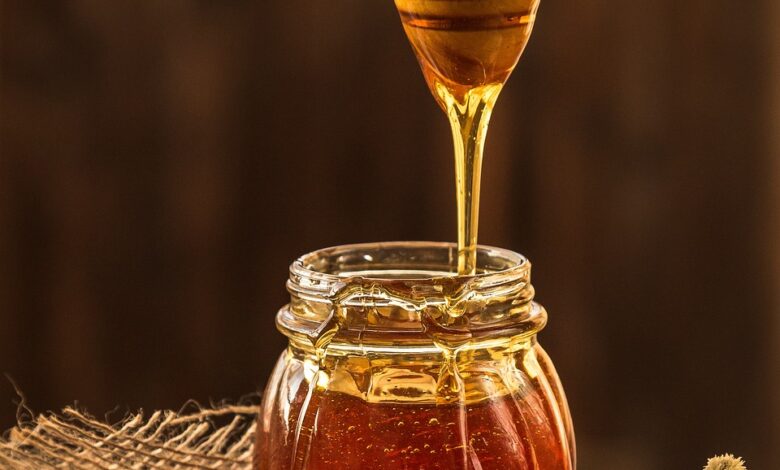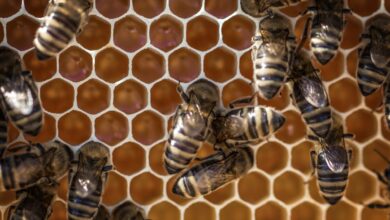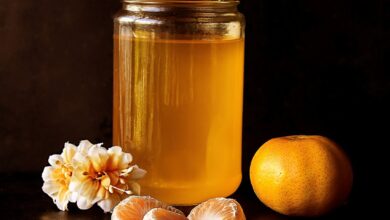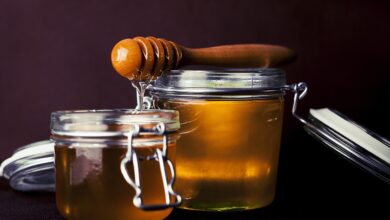
Honey, a natural sweetener produced by bees, has been treasured for its taste and health benefits for centuries. However, not all honey available on the market is genuine. With the prevalence of adulterated honey, it’s essential to know how to distinguish real honey from fake. This article provides an in-depth exploration of the characteristics of genuine honey, methods to test its authenticity, and tips for purchasing quality honey.
Characteristics of Genuine Honey
1. Viscosity and Texture
Genuine honey is thick and viscous. When you pour real honey, it flows slowly and forms a continuous stream. Fake honey, on the other hand, tends to be runnier due to added sugars or syrups.
2. Aroma
Real honey has a distinctive, floral aroma that varies depending on the flowers from which the nectar was sourced. Artificial honey often lacks this natural fragrance or may smell overly sweet and synthetic.
3. Taste
Authentic honey has a complex, rich flavor profile that can vary widely. It should taste slightly tangy or acidic, with natural undertones that reflect its floral origin. Fake honey often has a flat, overly sweet taste due to added sugars or corn syrup.
Simple Tests to Identify Real Honey
1. Water Test
Fill a glass with water and add a tablespoon of honey. Genuine honey will settle at the bottom of the glass and not dissolve immediately. Adulterated honey, which often contains added sugars or water, will start dissolving and mixing with the water.
2. Thumb Test
Place a small drop of honey on your thumb. If it spreads or spills around quickly, it might be fake. Pure honey will stay intact and not spread out immediately.
3. Heat Test
Heat a small amount of honey in a microwave. Genuine honey will caramelize quickly and not become foamy. Fake honey, due to added moisture and sugars, may produce bubbles and become frothy.
4. Paper Test
Drop some honey on a piece of blotting paper or a napkin. Pure honey will remain in place and not be absorbed quickly. Adulterated honey, with added water, will be absorbed or leave a wet mark.
5. Matchstick Test
Dip a matchstick into honey and then strike it. If the honey is pure, the matchstick will light easily. Impure honey, containing moisture, will prevent the matchstick from lighting.
Tips for Purchasing Quality Honey
1. Buy from Reputable Sources
Purchasing honey from trusted sources, such as local beekeepers or well-known brands, increases the likelihood of getting genuine honey. These sellers often adhere to stricter quality control measures.
2. Check the Label
Look for honey labeled as “raw,” “organic,” or “pure.” These labels suggest minimal processing and fewer additives. However, be aware that these terms are not always regulated, so it’s important to research the brand’s reputation.
3. Read Ingredient List
Genuine honey should not have added ingredients like high fructose corn syrup, sugar, or artificial flavors. The ingredient list should ideally state only one ingredient: honey.
4. Look for Certifications
Certifications from recognized bodies (such as the USDA Organic seal) can provide additional assurance of the honey’s purity and quality.
Advanced Methods to Test Honey Purity
1. Spectroscopic Analysis
Laboratories can perform spectroscopic analysis to identify the composition of honey. This test can detect the presence of added sugars and other impurities that are not detectable by simple home tests.
2. Nuclear Magnetic Resonance (NMR)
NMR is a sophisticated technique used to determine the geographical and botanical origin of honey. It can also detect adulteration with foreign sugars.
3. Pollen Analysis
Authentic honey contains pollen from the flowers the bees visited. Pollen analysis can verify the floral source and geographical origin of the honey, confirming its authenticity.
The Importance of Buying Genuine Honey
1. Health Benefits
Genuine honey retains its natural enzymes, antioxidants, vitamins, and minerals, which provide various health benefits. Fake honey, often stripped of these nutrients, does not offer the same health advantages.
2. Taste and Quality
The taste of real honey is superior and more nuanced than that of adulterated honey. Using genuine honey enhances the flavor of foods and beverages significantly.
3. Supporting Ethical Practices
Buying genuine honey supports ethical beekeeping practices and the preservation of bee populations, which are crucial for pollination and maintaining biodiversity.
Identifying genuine honey requires an understanding of its unique properties and some simple tests that can be performed at home. By being informed and vigilant, consumers can ensure they purchase real honey, enjoying its full range of health benefits and superior quality. When in doubt, opting for honey from reputable sources and certified products can provide additional assurance of its authenticity.



